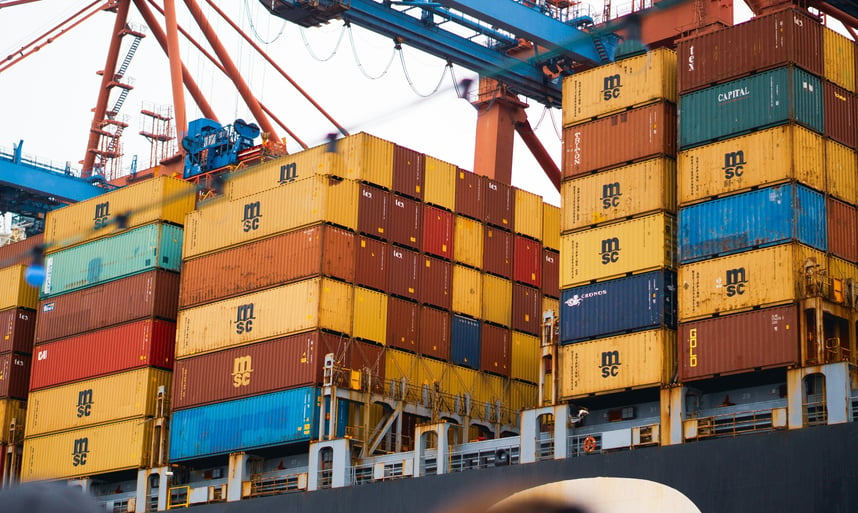U.S. Maintains Current Tariffs on China Amid Unfinalized Trade Deal and Lingering Supply Chain Concerns
POLITICS


Tariff Levels Locked In Despite Pending Agreement
Commerce Secretary Howard Lutnick confirmed on Wednesday that the United States will maintain its current tariffs on Chinese imports, signaling no changes to the existing tariff structure despite ongoing high-level trade negotiations between Washington and Beijing. Lutnick’s remarks came during an appearance on CNBC’s “Money Movers,” where he unequivocally stated, “You can definitely say that,” when asked if the tariffs would remain unchanged.
This position aligns with President Donald Trump’s statement posted earlier the same day on Truth Social, which asserted that U.S. duties on Chinese goods total 55%. However, a White House official quickly clarified to CNBC that this figure is not a new escalation but rather a combination of existing tariffs — 30% blanket tariffs on a wide range of products plus an additional 25% imposed on certain specific categories.
While this reiteration affirms a firm U.S. stance on trade with China, the broader trade deal between the two economic superpowers remains unfinished. Trump declared that the deal was “done” but emphasized that it remains “subject to final approval” between himself and Chinese President Xi Jinping.
The current tariff regime underscores a cautious approach by the U.S. administration, which, despite signaling progress in talks, appears unwilling to roll back punitive trade measures prematurely. This stance reflects ongoing concerns about China’s trade practices and the broader geopolitical tensions underpinning the negotiations.
Details of the Trade Talks and the Geneva Truce
The recent diplomatic engagements between U.S. and Chinese officials culminated in high-level talks in London. These discussions followed an earlier, tentative de-escalation of tariffs agreed upon in Geneva, which introduced a 90-day truce on retaliatory duties. During this period, both countries agreed to temporarily reduce tariff rates to ease tensions and provide space for further negotiations.
In his social media post, President Trump noted that China’s tariffs on American goods would remain steady at 10%, consistent with the temporary rollback established last month. He also highlighted a commitment from China to supply “full magnets, and any necessary rare earths” upfront, suggesting a new level of cooperation on critical mineral exports that are vital for U.S. manufacturing and technology sectors.
Commerce Secretary Lutnick framed the London talks as an extension of the Geneva agreement, describing them as setting the stage for the current tariff truce. He noted that prior to this breakthrough, China had been “slow-rolling” its export of rare earth minerals, prompting Washington to enact retaliatory measures including visa restrictions on Chinese students studying at U.S. universities.
Lutnick described the situation humorously as “mutual assured annoyance,” underscoring the tit-for-tat nature of the trade conflict. He credited a recent phone call between Presidents Trump and Xi as pivotal in breaking the deadlock and moving negotiations forward.
Rare Earth Minerals and Magnets: Critical Supply Chain Issues
One of the key issues at the heart of the trade discussions is China’s control over rare earth minerals and magnets — materials essential for the production of everything from smartphones to military hardware. The U.S. has long been dependent on China for these strategic resources, which has raised national security and economic concerns in Washington.
Following the London talks, Lutnick announced that China would immediately approve all applications from U.S. companies seeking to import magnets. This represents a significant policy shift intended to ease supply constraints and foster smoother trade in these critical components.
However, this optimistic development is tempered by persistent uncertainties. According to reports by The Wall Street Journal, China has agreed to issue only temporary licenses valid for six months at a time for companies importing rare earth minerals and magnets. This approach allows Beijing to reassess and potentially alter its export permissions biannually, injecting a degree of unpredictability into the supply chain.
Such temporary licensing could complicate long-term planning for U.S. manufacturers reliant on these materials, who may face periodic disruptions or sudden changes in availability. These supply chain risks remain a prominent concern for industry stakeholders, despite the recent progress in trade talks.
Lingering Questions and Political Ambiguities
While the Trump administration has publicly touted the progress made in London, several key questions remain unresolved. The White House has yet to provide detailed clarification regarding the terms of the London agreement, leaving market observers and trade analysts seeking further insight into the scope and durability of the concessions made.
Moreover, the broader trade relationship between the U.S. and China continues to be influenced by complex geopolitical factors beyond tariffs and trade volumes. Issues such as intellectual property rights, technology transfer, and broader strategic competition play critical roles in shaping negotiation dynamics.
The fact that tariff levels remain firmly in place despite ongoing negotiations indicates a measured approach by the U.S., signaling that any substantive easing will likely be contingent upon broader, more comprehensive commitments from Beijing.
In addition, the ongoing use of tariffs as a leverage tool highlights the sustained tensions underlying the U.S.-China economic relationship, which will likely persist even after a formal deal is finalized. This ongoing friction continues to inject volatility into global markets and supply chains.
Commerce Secretary Lutnick’s remarks, while optimistic about the immediate supply of magnets and rare earth minerals, illustrate a cautious optimism grounded in the reality of complex diplomatic negotiations. His acknowledgment of “mutual assured annoyance” encapsulates the ongoing push-pull dynamic between the two countries.
The unfolding developments around temporary export licenses and tariff stability will continue to be closely monitored by industries reliant on Chinese imports, as well as by policymakers weighing the broader strategic implications of U.S.-China trade relations.
